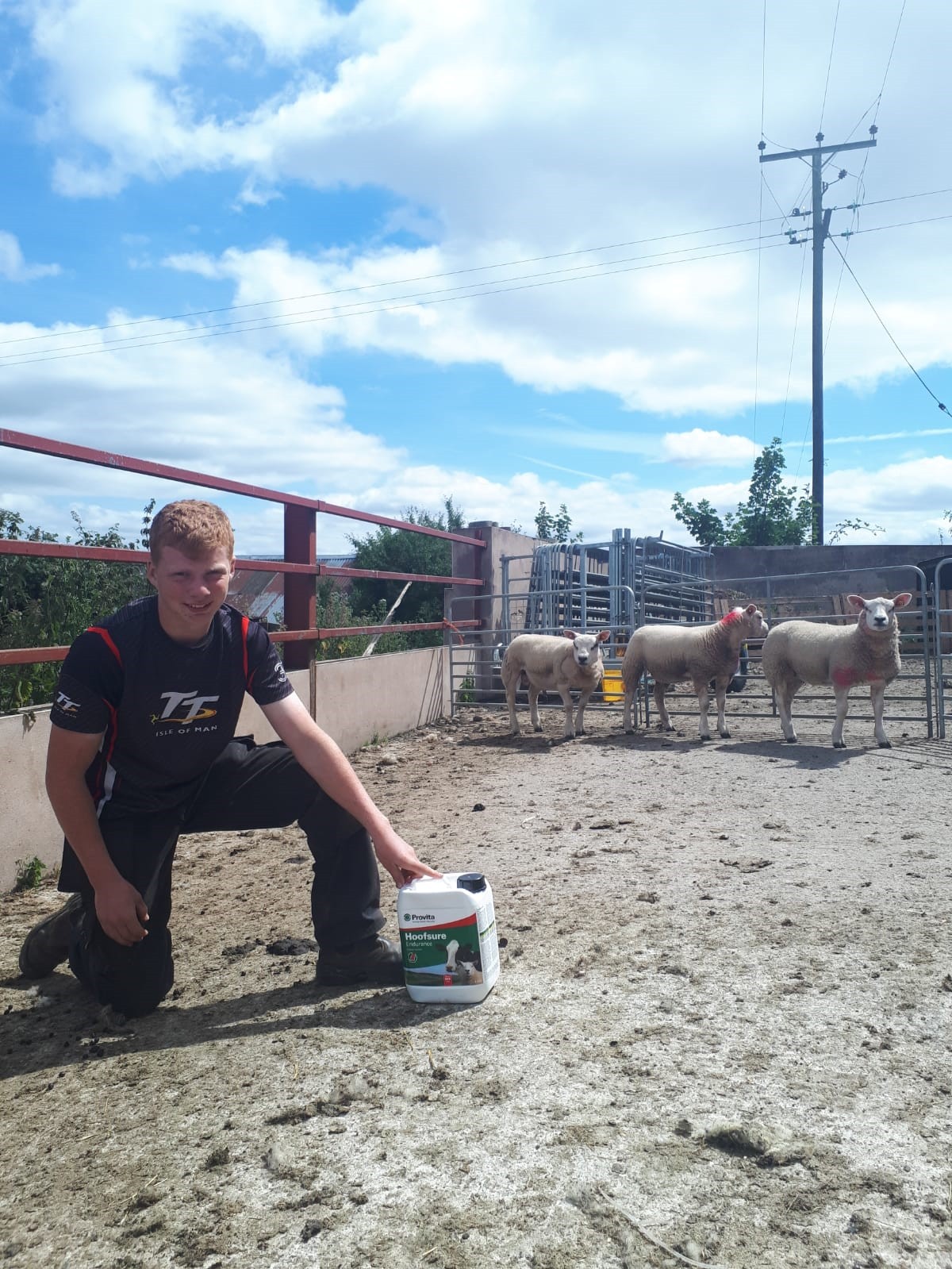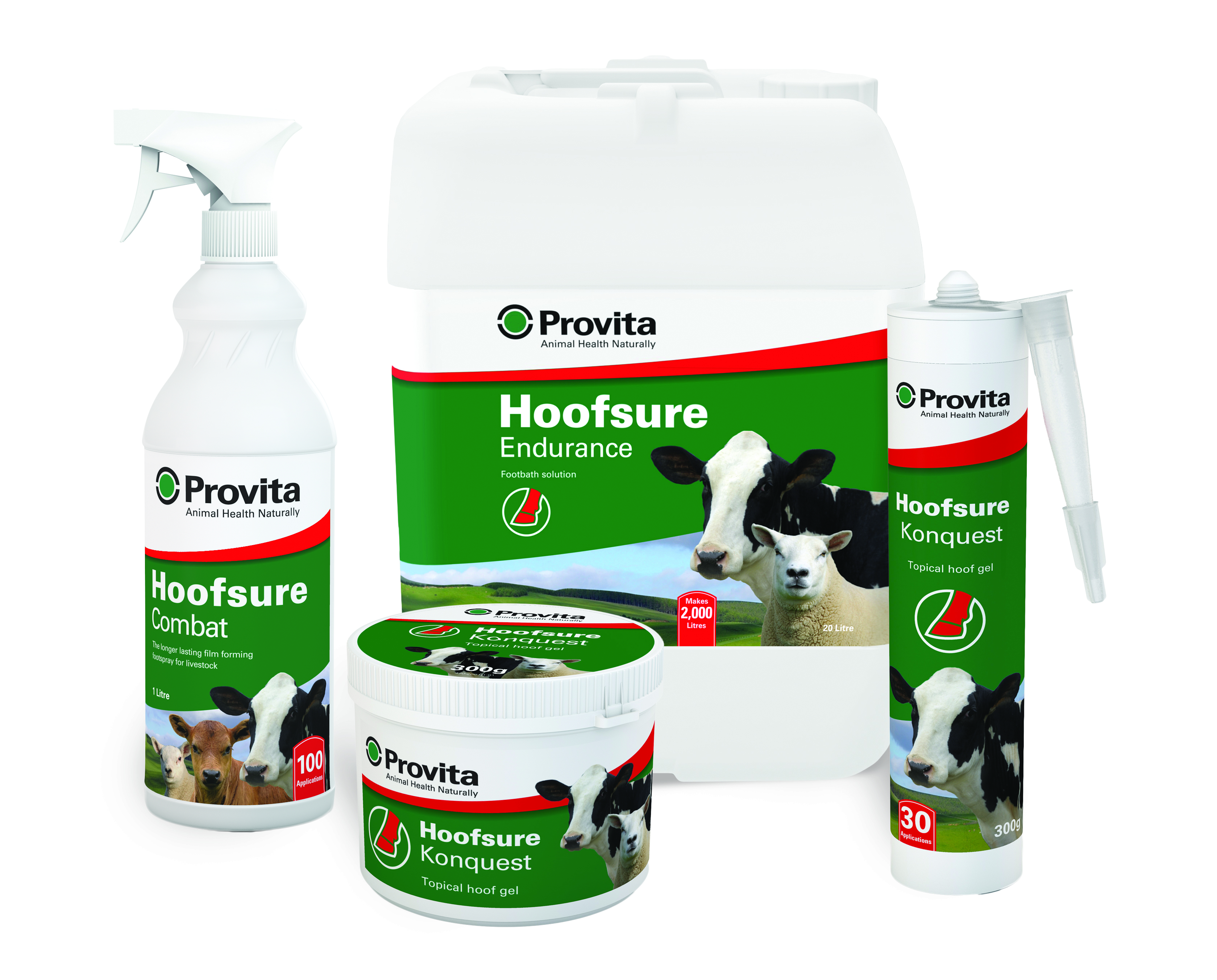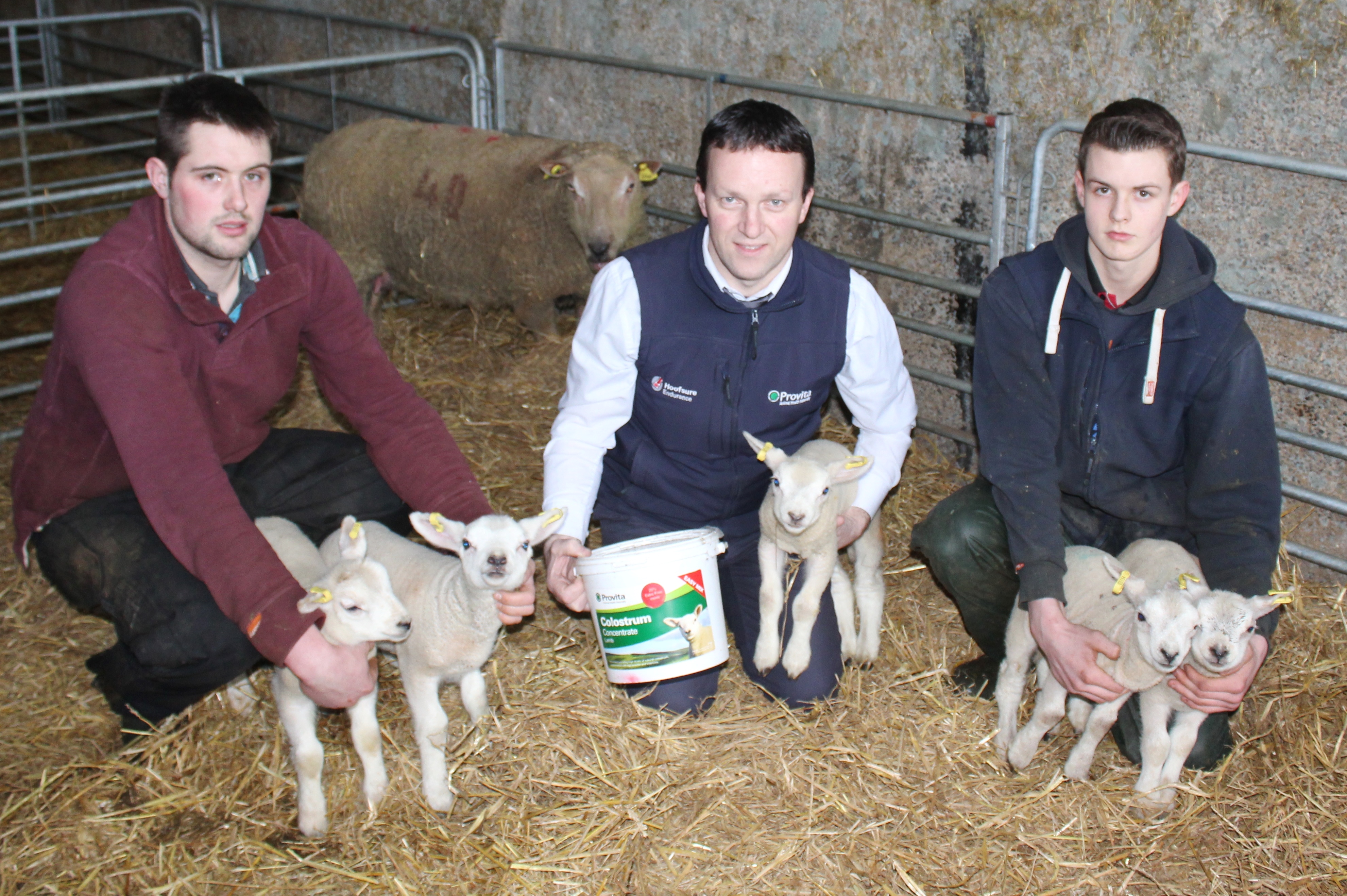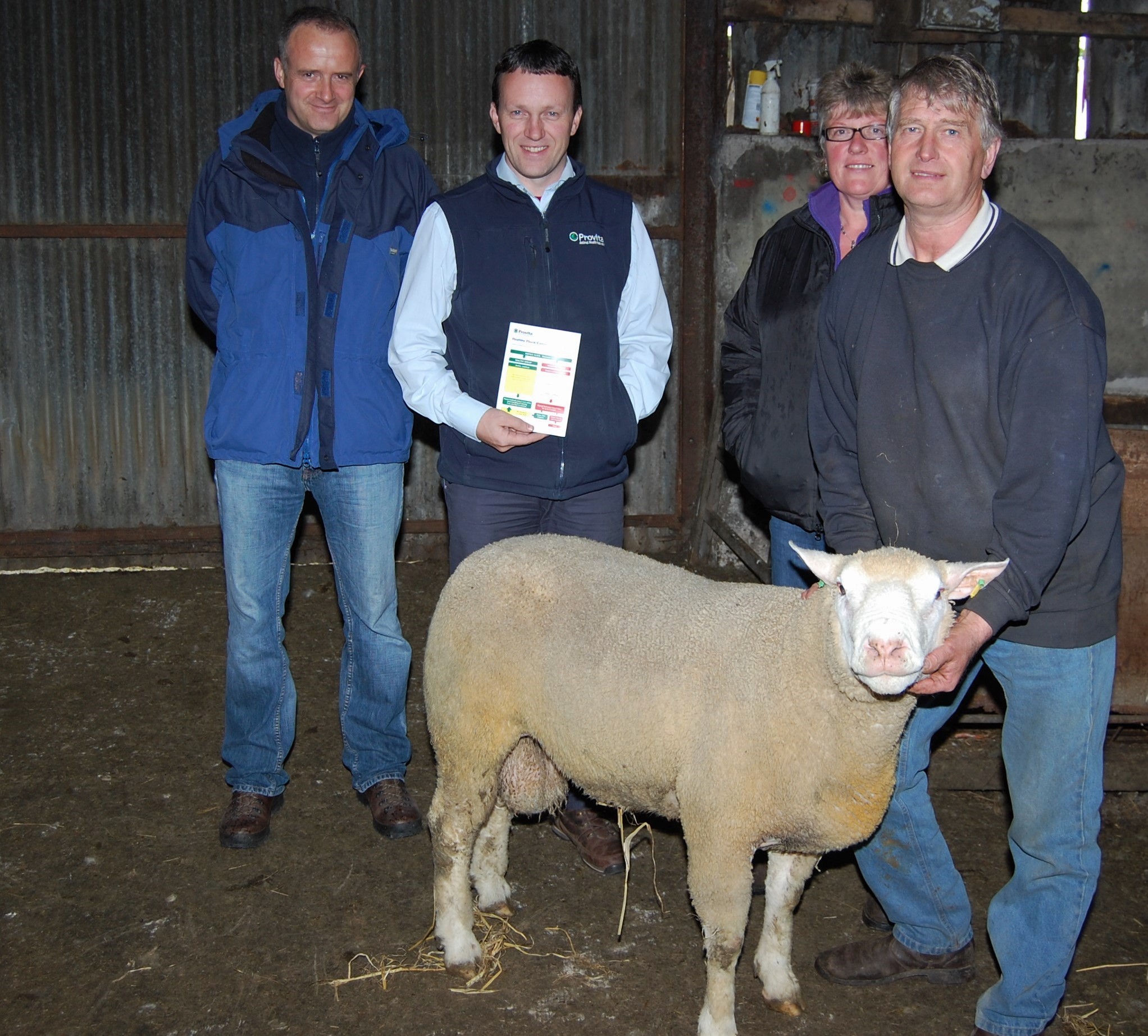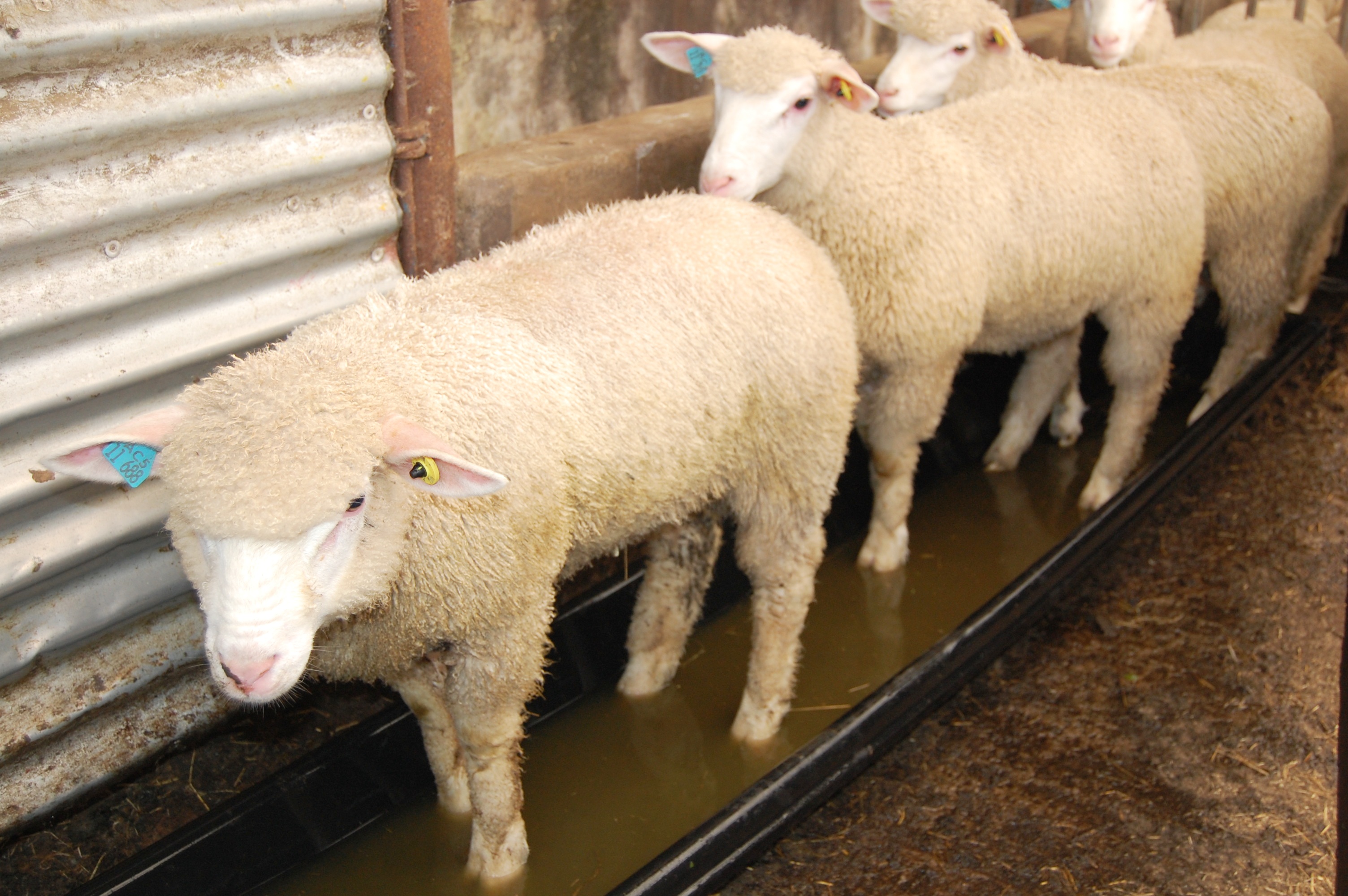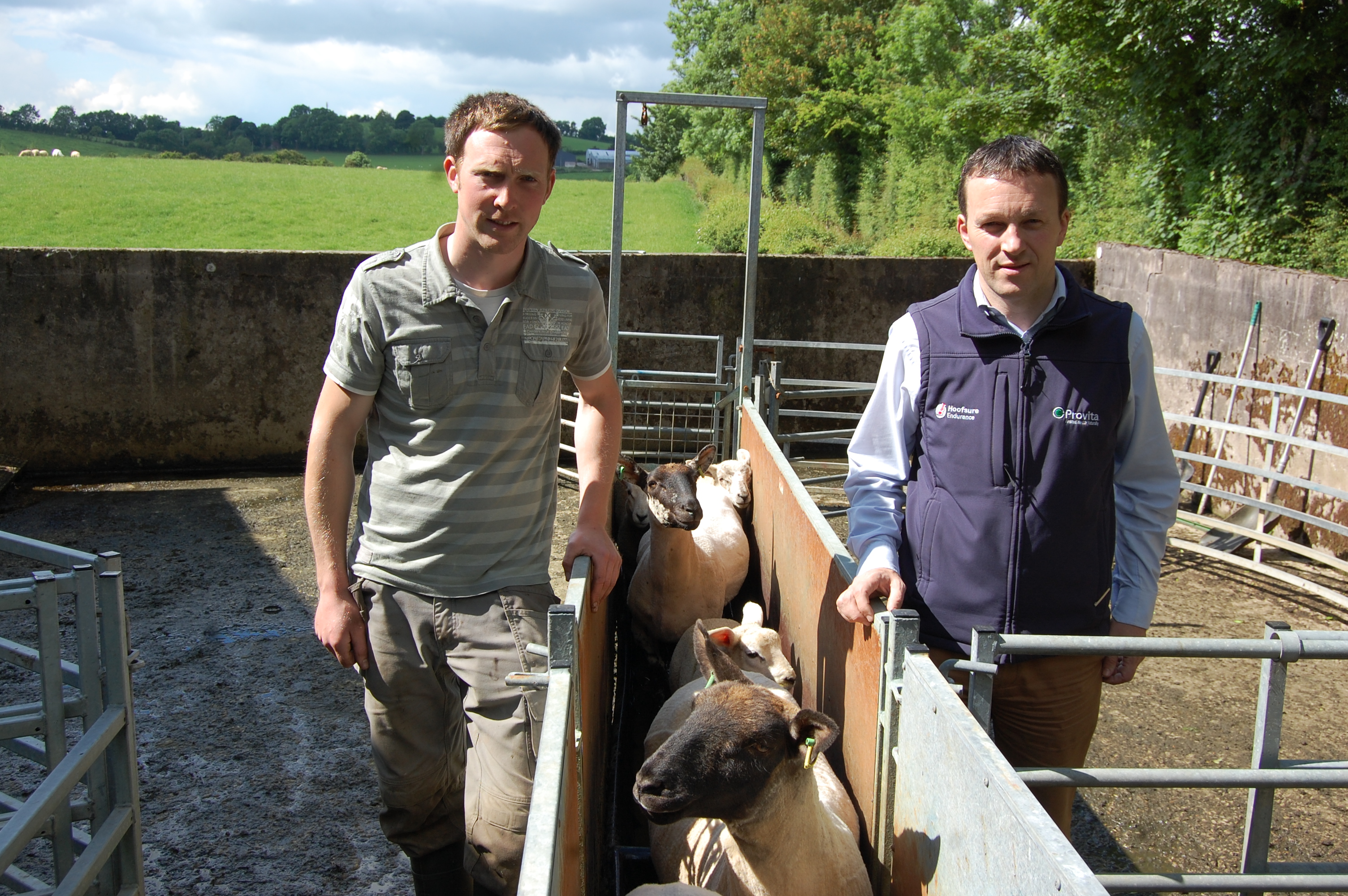Lameness is a major health and welfare problem in the UK. A study by Professor Laura Green, at the University of Warwick calculated that lameness cost UK farmers between £70M and £210M annually.* During summer months lameness problems can be higher due to higher stocking rates, longer grass and damp conditions.
sheep lameness
Provita Hoofsure Endurance helps mid-Ulster Farmer control lameness in sheep
Gavin Blair and his family run a 400 ewe flock and 80 suckler and beef herd near Moneymore. The flock consists of mule ewes put to Suffolk and Texel rams. Lambing takes place from February to April.
Sheep lameness – “prevention is better than cure”
Perry and Barbara Semple run a commercial flock of 500 ewes near Limavady. The ewes are Suffolk and Texel cross mule sheep put back to Texel and Belclare rams.
“We start to get lambs away from 11 weeks of age at 20kg deadweight with no meal. To do this they need to be thriving well the whole way through and cannot suffer any setbacks.
To achieve this the Semples use a variety of management techniques including rotational grazing and topping to ensure fresh leafy grass is available all the time, a worming and fluke program based on SCOPS principles and a preventative footbathing program.
Quintuplets born to Charollais ewe on Castlederg farm
Early this January saw a pedigree Charollais ewe give birth to quintuplets on the Castlederg farm of the Foster family. The even better news is that the mother and all the new arrivals are doing well.
“We were expecting the ewe to produce four lambs, based on her scanning results,” said John Foster.
“The arrival of the fifth was a genuine surprise. All of the lambs are of a decent size and the fact that they are all progressing well represents a genuine boost at the start of the 2017 lambing season.”
The Fosters, owners of the renowned Springhill Texel and Charollais flocks, are totally committed to achieving the highest levels of performance form all of their sheep. John’s son Graham takes up the story.
Footrot – prevention is better than cure
Scald if left untreated can develop into full blown footrot, according to Provita’s Tommy Armstrong. This was the main message he delivered at the recent sheep lameness workshop hosted by Carrickfergus pedigree Ile de France breeder Edward Adamson.
“Scald will develop if lambs and ewes are put out into fields where longer grasses predominate,” he added.
“Good grazing managment such as taking out fields for round bales or regular topping of paddocks is therefore essential. This practice should be accompanied by a commitment to regular foot bathing.”
Edward Adamson said that ewes with lambs should be foot bathed every two weeks.
NSA Sheep Event 2016
The National Sheep Association are hosting a sheep event, on Wednesday 27th September 2016 at the Three Counties Showground, Malvern, Worcestershire. Provita will be attending the show, and will be located at stand 82. Call and visit our stand for more information on our show offers including: Buy One 20L Hoofsure Endurance get a 5′ … Read more
Provita to host series of sheep lameness talks
Provita has confirmed that it is to host a series of sheep lameness talks over the coming weeks. Two venues and dates have been confirmed. The first will take place in Markethill Sale Yard on Wednesday June 29th, commencing at 6.00pm. The address is Markethill Sale Yard, 12 Cladymilltown Road, Armagh, BT60 1RS. The following day, Thursday June 30th, two events will be hosted by Carrickfergus flockowner Edward Adamson. The address for this event is 6 Fort Road, Killroot, Carrickfergus, Co Aantrim, BT38 9BS. The planned starting times are 1.00pm and 6.00pm. Other dates and venues will be confirmed shortly.
Lameness problems on the increase in sheep flocks
The recent boost in grass growth rates has led to increased lameness problems within sheep flocks,” according to Provita’s Tommy Armstrong.
“The problem is caused by taller stands of grass irritating the skin between the claws,” he added.
“If left unchecked, this can lead to the development of foot rot. Both ewes and lambs are equally predisposed to these problems at this time of the year. And, of course, prevention is better than cure.”
In order to make this sentiment a reality, Armstrong is encouraging flockowners to foot bath their sheep on a regular basis.
Provita at Clogher Show
Provita will be at next week’s Clogher Show, taking place on Wednesday July 31st. “We will be located adjacent to the sheep rings,” confirmed Provita’s Tommy Armstrong. “And we look forward to making contact with farmers throughout the day.”
Regular Footbathing helps to prevent Lameness in Sheep
Denver McCall, from Madden in Co Armagh, runs a 400 strong flock of Spring lambing Suffolk cross Mule ewes. “We use a selection of Texel tips to produce a high quality finished lamb,” Denver confirmed to Farming Life. Denver believes that total attention to detail is the key to successful sheep production. To this end, … Read more
